‘Slow flowers’ in Matakana: This fresh take on sustainable floristry includes pick-your-own blooms
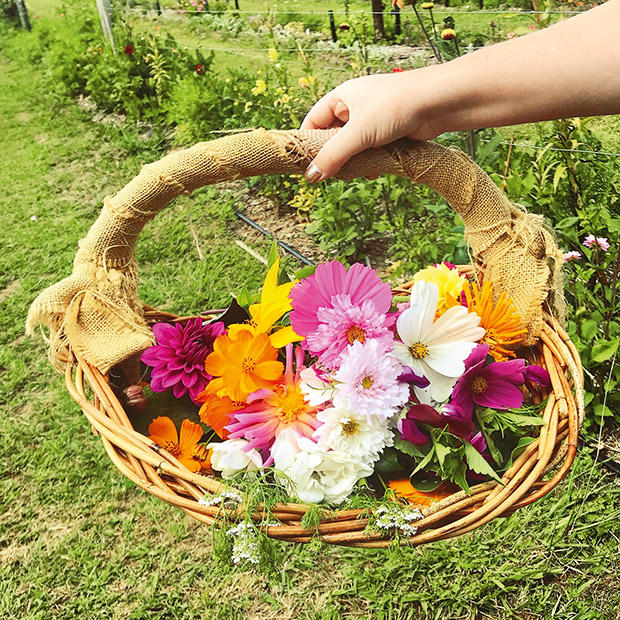
An avid gardener has turned her passion for flowers into a unique block business that shares the love with everyone.
Words: Jane Wrigglesworth Photos: Rebecka Keeling
Who: Rebecka Keeling
Where: Matakana, 55 minutes north of Auckland
What: Slow Blooms, pick-your-own garden, slowblooms.com
Slow Blooms is booming. A 10-minute drive from her quarter acre home and burgeoning food forest, Rebecka Keeling has turned part of an old vineyard into a business where anyone can share her love of flowers and herbs.
She’s joined the ‘slow flower’ trend, where people can wander at leisure through her specialist cutting garden, picking blooms from a huge range of plants.
The blossoming of the slow flower movement has been partially bolstered by supply chain issues because of Covid-19 restrictions. It’s also due to a collective shift in consumers’ focus away from exotic, out-of-season blooms to local, sustainable alternatives. Rebecka’s flowers are grown without chemicals, with a lot of love and attention, destined for local homes.
“I love having freshly cut flowers at home,” she says. “I’m not loving the impact imported flowers have on the planet, from being flown in from the other side of the world. Not knowing what they’ve been sprayed with, or how the workers are treated in those greenhouses, or what impact the flower growing operations had on the water supplies in those countries.
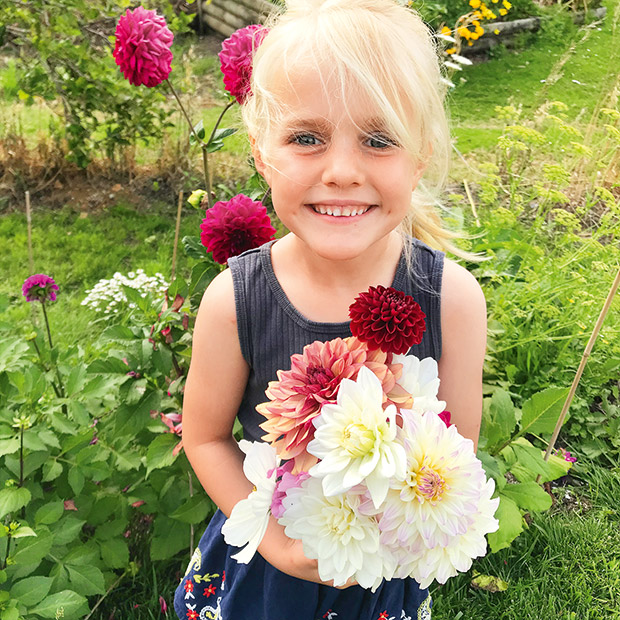
“There’s way less control of flowers compared to other fresh produce. There’s usually no country of origin or Fairtrade stickers like with your bananas, and there have been reports on the poisoning of local water supplies in developing countries, with locals suffering because of mass-production of flowers for rich countries.”
Rebecka’s business is about wellbeing. Studies consistently link outdoor activities with improved mental and physical health.
“My vision was to create a calming and healing space to enjoy flowers grown in their natural environment and natural season, without the use of harsh sprays,” she says. “I wanted it to be a place for people who might not have their own garden, like myself over the past few years. (They) could wander around, taking their time to smell the flowers and pick what they fancied, whether it be a bucket full of bright blooms, or just a small sweet-smelling posy of sweet peas, or some herbs for cooking or herbal teas.”
THE SLOW BLOOMING PLAN
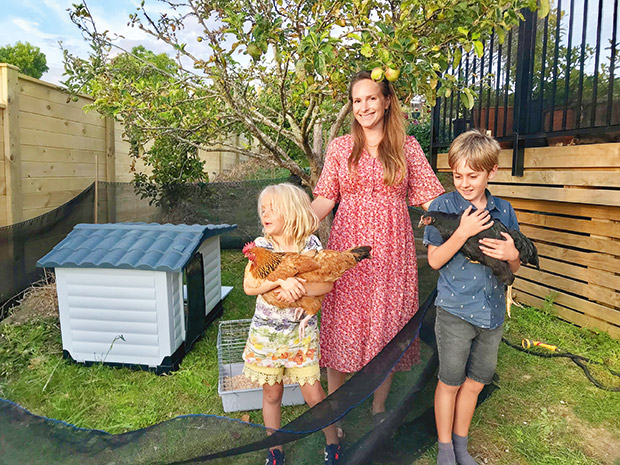
Daughter Rio and son Ridley both help out in the garden. Rio also has a side hustle drying flowers for sale.
The Swedish native met her Whanganui-born husband Reuben while studying and working in Auckland 15 years ago. The couple did an OE in the United Arab Emirates, working in communications and marketing. They lived cheaply and worked hard for a couple of years. They saved enough money to buy their first home in Sweden where they lived for seven years.
“During this time, I became less motivated doing PR to sell products, and more interested in communicating about sustainability and things that matter, and also walking the talk in our everyday lives,” says Rebecka.
During the generous 16 months of parental leave in Sweden, she studied Sustainable Development at Stockholm University, learning about resilience and planetary boundaries from renowned climate scientists such as Johan Rockström and Hans Rosling.
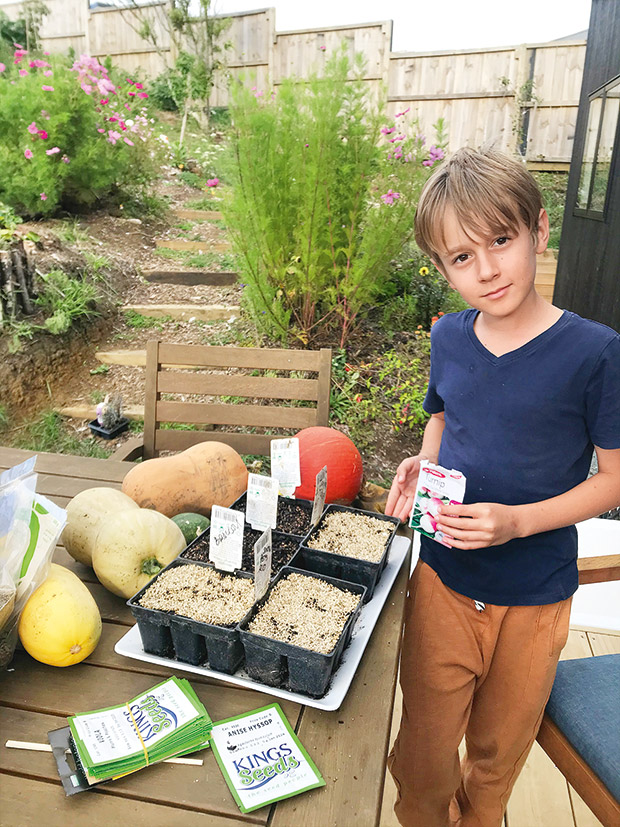
During pregnancy and parental leave with second child Rio in 2015, Rebecka got more hands-on. The family returned to New Zealand to go wwoofing (willing workers on organic farms).
“We stayed with a family with three young kids in the Eco Village on Waiheke Island. I got really into gardening, prepping, and self-sufficiency. It was probably a bit anxiety-fuelled, to be honest, thinking of how I could provide food for my family in case of shit-hit-the-fan, but then turning that anxiety into something constructive.”
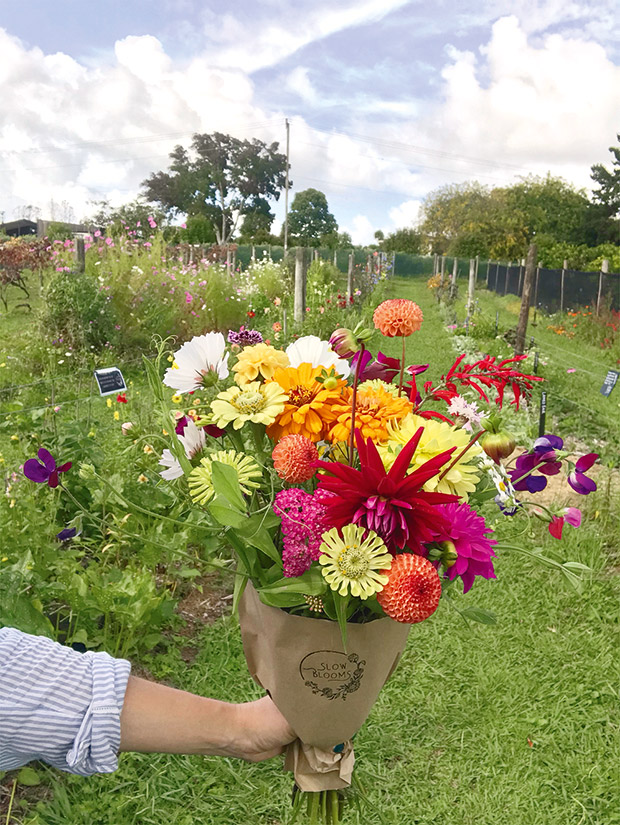
Around that time, Rebecka’s mother Sara, who has always been a gardener, decided to quit her job to focus on her business Saradiset (a combination of Sara and the Swedish word for paradise) where she teaches people to grow their own food.
“We have encouraged and bounced ideas off each other. She was doing her permaculture certificate in Stockholm at the same time as I was doing mine in Matakana!”
The family decided to make their move to NZ permanent so they could focus on their interest in gardening, animals, and self-sufficiency. They bought a house-and-land package just outside of Warkworth, but sadly the deal fell through as the block didn’t have a title.
“So instead of slowing down to this relaxing new lifestyle we were yearning for, we went into probably the most stressful period of our lives. We had to pay the skyrocketing rents in Warkworth, plus the mortgage on the land/property that we couldn’t live on (because there was no house) and on top of that, crippling legal fees.”
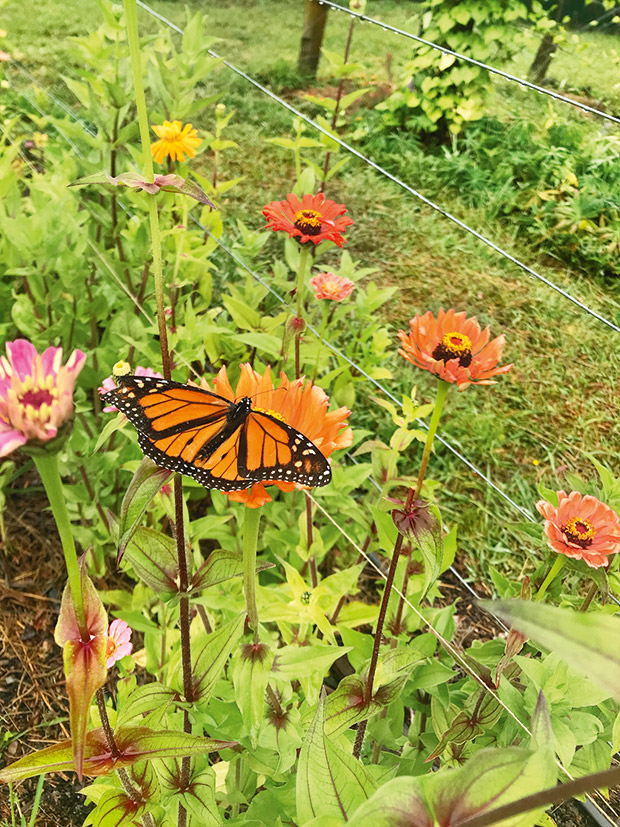
It was a challenging time. Rebecka was studying for a Horticulture Certificate, getting used to the NZ way of life, and helping their children who were starting school in their second language.
“Reuben had to get a better paying job, which meant commuting four hours a day into the city, and it took its toll mentally and physically on all of us.”
Their dream of living on a block had to be postponed. Instead, they bought an overgrown, steep, south-facing, quarter acre (1015m²) town section in Warkworth. Their new home was built in a factory in South Auckland and transported on site.
The couple cleared and composted large areas of noxious weeds and trees well past their best. They used them to create hügelkultur beds (see page 16) that form terraces up the slope. They now grow vegetables, flowers, over 70 trees, and have created a food forest.
“We’ve got several different varieties of bananas, ice cream (Inga) bean, avocados, yacon, cherimoyas, fig, coffee, tea (Camelia sinensis), elderberry, blackberry, boysenberry, Jerusalem artichokes, and a double row of globe artichokes as a windbreak. The whole family loves eating artichokes, and the silvery foliage looks great in bouquets too.”

To help enrich the soil and improve its texture, they grew cover crops of oats, mustard, lupins, phacelia, buckwheat, and daikon radish in their first year. “This (second) season we’re getting our inspiration from the Permadynamics food forest where I did a banana-growing course, and trying pumpkins, squash, and other vines on the forest floor instead. I’ve snuck in some non-edible supporters like eucalyptus and scented pelargoniums, which I can use in my flower arrangements too.”
She’s also included some tree lucerne, gifted to her by permaculture friends at their housewarming party. “(They also gave me) a bottle of BAM compost accelerator – have you ever heard of a more permie present?”
Living in a permaculture-designed environment and running a business that encourages people to slow down and pick the flowers is at the heart of Rebecka’s life philosophy.
“I’m approaching the role as flower farmer from a self-sufficiency and permaculture perspective of caring for the Earth. It’s doing something positive for the health of our planet and its inhabitants, from microorganisms to bees – we couldn’t live without either.”
SHARING THE LOVE

Rebecka welcomes a wide range of people to her business, from a bride and her wedding party picking fresh flowers for their bouquets, to florists, to older members of the community who don’t have a big garden.
“One lesson in running the business is that you can’t please everyone,” says Rebecka. “Some people won’t care about flower miles or poisonous sprays; they just want the tallest, straightest stem for the cheapest possible price.
“Some people think that just because they pick for themselves, it should be cheaper because they do the job for you. They don’t realise how much extra work it is to keep a garden that is safe and pleasant for the public to walk through, as opposed to one that is just set up for maximum production.”

A little wooden shed welcomes visitors, with baskets, snips, and sometimes ready-made posies of fresh flowers.
However, mostly it’s lovely feedback about how much people enjoy giving someone a unique bouquet that they’ve put together themselves. How the flowers have lasted so much longer because they haven’t spent a week in transit and then at auction like imported ones.
“I’ve become more comfortable with charging a decent amount for them and stand by my prices.”
She’s also added a donation box for those people who want to enjoy the gardens but not buy anything.
THE FAMILY FLOWER BUSINESS
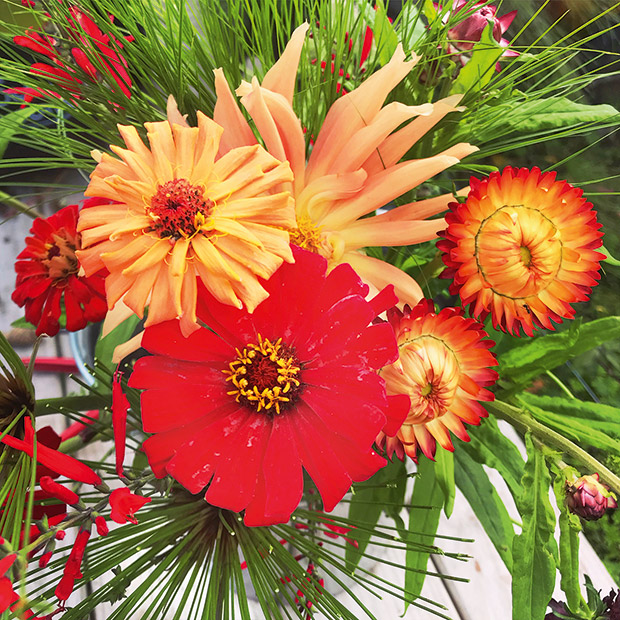
Reuben does the heavy lifting and sets up systems such as irrigation. Ridley and Rio enjoy pottering around in the garden.
“Ridley is good with the wheelbarrow and the broad fork, and Rio will talk the ear off customers, telling them all about the medicinal benefits of our herbs, which ones they can use to make a lip balm and which ones are good for the butterflies and bees.
“Rio also has a little side business where she dries and presses flowers, which she sells to Magnolia Kitchen Boutique, which I supply with cut flowers too. They have a brilliant young florist, Abby, who does a lot of very creative dried arrangements and artworks and she loves using Rio’s dried flowers.”
At the core of her business and the slow flower movement worldwide are fresh, sustainably grown blooms, giving florists choices that are better for the environment.
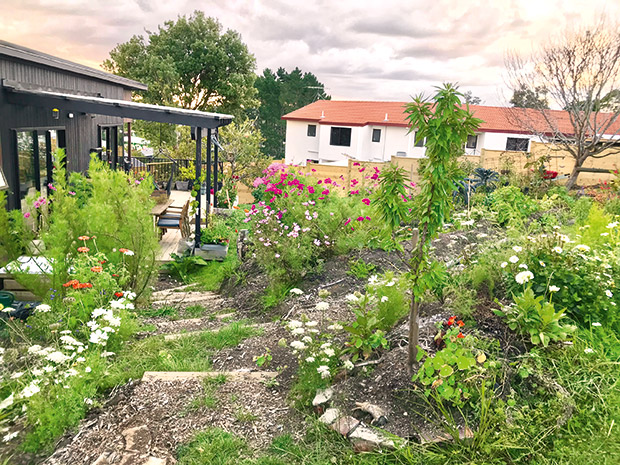
“I’m passionate about the slow flower movement. I see Slow Blooms as not only a way of providing sustainable flowers for my local community, but also as a platform for me to champion locally and naturally grown flowers, changing through the seasons, instead of identical cookie-cutter ‘perfect’ ones packed in plastic that look the same all year round.”
Life now is a lot more simple. While they don’t have the block of their dreams, they do have a lot to be grateful for, says Rebecka.
“I still dream of one day having some Swedish Gotland sheep and a couple of ponies outside of my kitchen window, but at least we’re now able to have our much-beloved Doberman puppy, and enough chickens to keep us in eggs. And I even got a pony! Toffee is grazing at my friend’s property 10 minutes from here; we are doing some jumping and horse archery but mostly just riding out along Algies Bay and Snells Beach.”
Life, indeed, is blooming, and it’s a good thing.
Creating a garden out of nothing using hügelkultur beds
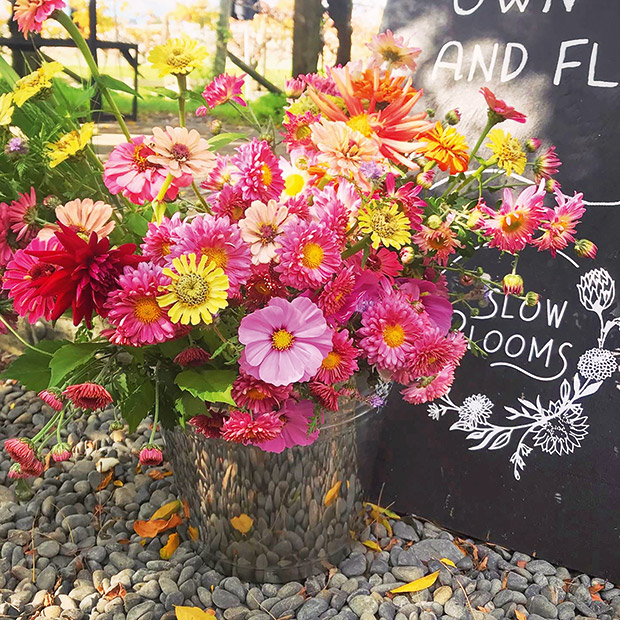
Every permaculture design element, whether it’s a garden or a house, should have multiple uses or reasons for being.
In the case of the garden around their home, Reuben and Rebecka wanted to terrace their steep, southwest-facing site, so it would hold water and nutrients, rather than watch them rush off downhill every time it rained.
The answer was hügelkultur (pronounced ‘hugh-gal-culture’) beds. Piles of branches are laid down to form a base, then covered with topsoil or composting material. Water drains through it quickly, helping to rot the wood which releases nutrients that benefit the soil. The beds also act like a sponge, holding water.
“The whole top (northern) part of the section was covered in overgrown hedge plants and other self-seeded trees, creating a dark and unproductive property. After we took down the majority of these trees and shrubs, we had plenty of material handy to build hügelkultur beds with minimal energy and investments.”
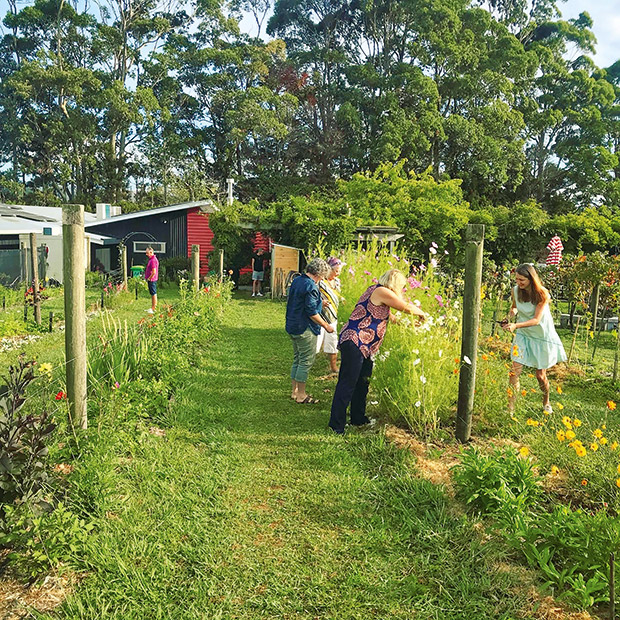
It was a lot of work to set it up, says Rebecka, but there’s also been a massive return on that investment.
“That energy keeps feeding back to you over the years to come as the materials in the bed break down. The wood in those beds will break down, feeding the beneficial microorganisms that feed the soil, that in turn feeds the plants that feed us.”
It also looks a lot nicer. “Even when some of the beds are just in green manure/cover-crops they still look a lot better than a steep lawn that also takes a lot of energy to maintain. In my opinion, anyway.
“By making a raised garden bed with sides that we can grow on, we created north and east-facing growing areas, making the most of the energy from the sun.”
RULE NO.1: DIVERSIFICATION

Diversity is key in permaculture, and in life, says Rebecka. Monocultures are weak, as one pest or disease can wipe it out.
“A diverse range of different crops is strong. Another benefit of biodiversity is that it feeds more biodiversity. We pulled out a monoculture of grapevines and replaced them with over a hundred different flowers, so the bees and butterflies are loving it.”
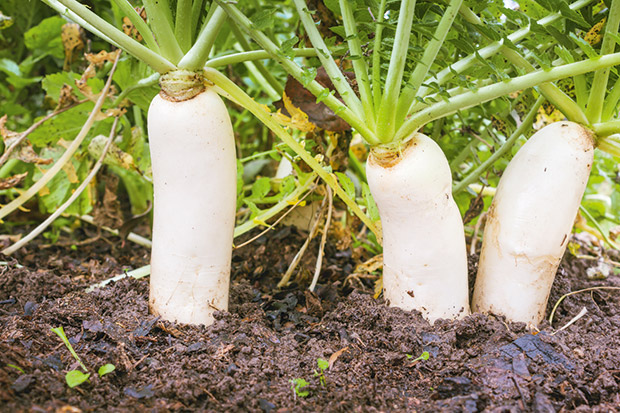
Rebecka grows daikon as a winter cover crop in the Slow Bloom garden beds. “We’ve been struggling with poor drainage and waterlogged soil in our lower growing beds, to the detriment of our echinacea and others that have failed to thrive.” Daikon act like a ‘biodrill’, growing down to almost a metre deep, loosening compacted soil. “Nature’s own crowbar, according to my permaculture mentor Trish Allan,” says Rebecka.
Diversification was also critical during the 2021 lockdown. During Level 4, they weren’t permitted to sell their flowers, so Rebecka dried them instead. She dug up and divided all the dahlia tubers. Her friend Cecilia – “like the sister I never had” – helped out, potting up self-seeded perennials for sale.
Love this story? Subscribe now!
 This article first appeared in NZ Lifestyle Block Magazine.
This article first appeared in NZ Lifestyle Block Magazine.
